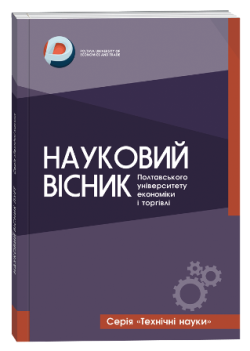DESIGN OF EDUCATIONAL TOOL ON THE SUBJECT “EQUATIONS AND SYSTEMS OF EQUATIONS” FOR THE SCHOOL MATHEMATICS COURSE
Abstract
An educational simulator is a method of interactive learning that can be effectively implemented in different classes (explanation of new material, practical classes) and used for different purposes (acquiring new knowledge or consolidating material, practicing and testing skills). The purpose of the article is the development of educational software on the topics of the school mathematics course. Research methodology. To solve the tasks, an overview of available simulators was used, their advantages and disadvantages were analyzed. The results. A study of the methods of implementing educational products was conducted, which included determining the requirements for the program, developing the architecture, choosing technologies, programming and testing. An analysis of software products for learning showed that most of them provide the opportunity to study a separate section or type of equations, or only aim to test the level of knowledge of the topic. The structure of the teaching assistant has been developed. The material on the selected topic for each block of the application has been studied and systematized. On the basis of the considered methodical sources, the solutions of typical examples were selected as methodical recommendations for the performance of practical tasks. Based on the theoretical material, a database of test tasks was developed for each topic block. The tasks include closed answers (one correct or several), open (tasks for entering the answer), exercises where it is necessary to establish the correspondence. Tasks with step-by-step execution control the student at each stage of the solution. A fragment of the working algorithm of the educational software is presented on the example of one of the "Quadratic Equations" blocks. Practical significance of research results. The work materials will be useful for mathematics teachers, tutors, as well as students who study mathematics at school or remotely.
References
2. Буряк О. Цифрові інструменти в управлінській діяльності закладу загальної середньої освіти. Освітні технології. Освіта на Луганщині, 2021. № 4 (65). С. 52–60.
3. Биков В., Спірін О., Пінчук О. Сучасні завдання цифрової трансформації освіти. Вісник Кафедри ЮНЕСКО «Неперервна професійна освіта ХХІ століття». Київ, 2020. С. 27–36.
4. Скляр О. В., Віра М. Б. Методика вивчення текстових задач в шкільному курсі алгебри. Ніжин, 2020. 91 с.
5. Новікова А. О., Швець В. О. Формування в учнів основної школи умінь математичного моделювання у процесі навчання алгебри. НПУ ім. М. П. Драгоманова: Київ, 2021. 305 с.
6. Істер О. С. Алгебра: підручник для 8-го класу загальноосвітніх навчальних закладів. К.: Ґенеза, 2016. С. 170–221.
7. Лисогор Л., Берендєєв С., Косенчук Ю. Використання електронних освітніх матеріалів у освітньому процесі: сучасні підходи і технології Нової української школи. Випуск 1: навч.-метод. посібник, Київ, 2023. 117 с.


